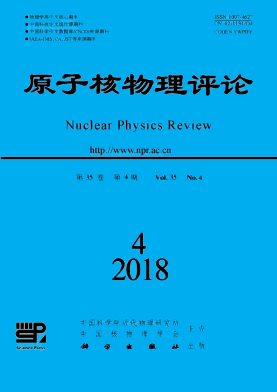|
[1]
|
LATTIMER J M, PRAKASH M. Phys Rep, 2000, 333:121. |
|
[2]
|
LI B A, CHEN L W, KO C M. Phys Rep, 2008, 464:113. |
|
[3]
|
CHEN L W, KO C M, LI B A. Phys Rev C, 2005, 72:064309. |
|
[4]
|
OERTEL M, HEMPEL M, KLÄHN T, et al. Rev Mod Phys, 2017, 89:015007. |
|
[5]
|
ZHANG F S, CHEN L W. Chin Phys Lett, 2001, 18:142. |
|
[6]
|
STEINER A W. Phys Rev C, 2006, 74:045808. |
|
[7]
|
XU J, CHEN L W, LI B A, et al. Phys Rev C, 2009, 79:035802. |
|
[8]
|
XU J, CHEN L W, LI B A, et al. Astrophys J, 2009, 697:1549. |
|
[9]
|
CAI B J, CHEN L W. Phys Rev C, 2012, 85:024302. |
|
[10]
|
SEIF W M, BASU D N. Phys Rev C, 2014, 89:028801. |
|
[11]
|
KAISER N. Phys Rev C, 2015, 91:065201. |
|
[12]
|
WANG R, CHEN L W. Phys Lett B, 2017, 773:62. |
|
[13]
|
PU J, ZHANG Z, CHEN L W. Phys Rev C, 2017, 96:054311. |
|
[14]
|
GONZALEZ-BOQUERA C, CENTELLES M, VIÑAS X, et al. Phys Rev C, 2017, 96:065806. |
|
[15]
|
LIU Z W, QIAN Z, XING R Y, et al. Phys Rev C, 2018, 97:025801. |
|
[16]
|
CHEN L W, CAI B J, KO C M, et al. Phys Rev C, 2009, 80:014322. |
|
[17]
|
WELLENHOFER C, HOLT J W, KAISER N. Phys Rev C, 2016, 93:055802. |
|
[18]
|
NANDI R, SCHRAMM S. Phys Rev C, 2016, 94:025806. |
|
[19]
|
XU C, REN Z Z. Chin Phys Lett, 2012, 29:122102. |
|
[20]
|
HEN O, LI B A, GUO W J, et al. Phys Rev C, 2015, 91:025803. |
|
[21]
|
CAI B J, LI B A. Phys Rev C, 2016, 93:014619. |
|
[22]
|
ZHAO Q, SUN B Y, LONG W H. J Phys G:Nucl Part Phys,2015, 42:095101. |
|
[23]
|
CAI B J, LI B A. Phys Rev C, 2015, 92:011601. |
|
[24]
|
RING P. Prog Part Nucl Phys, 1996, 37:193. |
|
[25]
|
MENG J, TOKI H, ZHOU S G, et al. Prog Part Nucl Phys, 2006, 57:470. |
|
[26]
|
ZHOU S G, MENG J, RING P. Phys Rev Lett, 2003, 91:262501. |
|
[27]
|
LONG W H, VAN GIAI N, MENG J. Phys Lett B, 2006, 640:150. |
|
[28]
|
LONG W H, RING P, VAN GIAI N, et al. Phys Rev C, 2010, 81:024308. |
|
[29]
|
LONG W H, SAGAWA H, MENG J, et al. Phys Lett B, 2006, 639:242. |
|
[30]
|
LI J J, LONG W H, SONG J L, et al. Phys Rev C, 2016, 93:054312. |
|
[31]
|
LIANG H Z, VAN GIAI N, MENG J. Phys Rev Lett, 2008, 101:122502. |
|
[32]
|
LONG W H, SUN B Y, HAGINO K, et al. Phys Rev C, 2012, 85:025806. |
|
[33]
|
SUN B Y, LONG W H, MENG J, et al. Phys Rev C, 2008, 78:065805. |
|
[34]
|
JIANG L J, YANG S, DONG J M, et al. Phys Rev C, 2015, 91:025802. |
|
[35]
|
JIANG L J, YANG S, SUN B Y, et al. Phys Rev C, 2015, 91:034326. |
|
[36]
|
ZONG Y Y, SUN B Y. Chin Phys C, 2018, 42:024101. |
|
[37]
|
DONG J M, ZHANG Y H, ZUO W, et al. Phys Rev C, 2018, 97:021301. |






 甘公网安备 62010202000723号
甘公网安备 62010202000723号 DownLoad:
DownLoad: